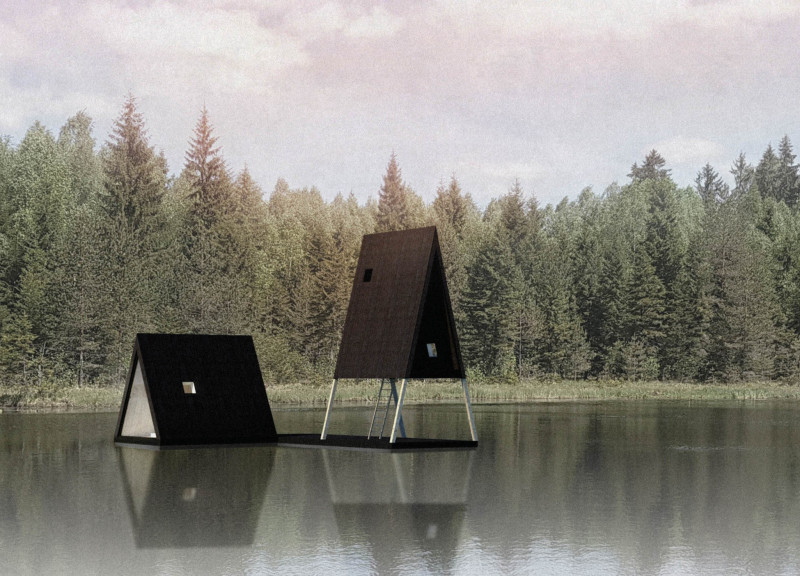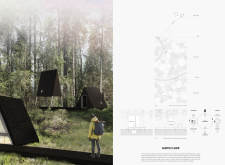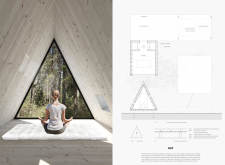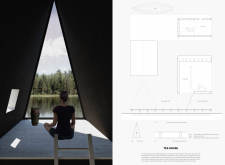5 key facts about this project
At its core, the project embodies the principles of simplicity and functionality, drawing inspiration from traditional hermitic life while also embracing modern sustainable design practices. The architecture of the retreat consists of multiple structures – primarily the Hut, Tea House, and Outhouse – each fulfilling distinct functions that foster relaxation, social interaction, and utility. The design reflects a clear intention to provide spaces that facilitate both solitude and community engagement, all while minimizing environmental impact.
The physical structures are elevated above the water on aluminum pontoons, which offer stability and allow them to float gently within their natural context. This unique architectural approach not only enhances the aesthetic appeal of the buildings but also provides a dynamic interaction with water, encouraging occupants to immerse themselves in the surrounding landscape. The combination of buoyant structures and elevated walkways minimizes ground disturbance and preserves the integrity of the natural environment.
Materiality plays an essential role in the overall architectural narrative of the Floating Worlds retreat. The predominant use of locally sourced wood throughout the project, particularly in dark-stained exterior cladding and lighter interior finishes, establishes a warm, inviting atmosphere that feels inherently connected to the site. The choice of materials emphasizes sustainability, with timber that is carefully harvested to reduce ecological disruption. Interior spaces use light-colored wood, creating contrast that enhances the sense of openness and encourages natural light to permeate each building.
Each structure is designed with specific purposes and unique features that contribute to the project's overall vision. The Hut serves as a multipurpose dwelling for relaxation and meditation, with expansive windows that frame picturesque views and flood the space with natural light. Its layout is functional yet minimalist, catering to the needs of its occupants while promoting a peaceful ambiance.
The Tea House offers a communal area for social interactions and gatherings. Its design fosters an open connection to the surrounding nature, allowing residents to enjoy the outdoors from within. This structure encourages a sense of community while still offering moments of tranquility, enhancing the retreat's ability to balance solitude with shared experiences.
An important component of the project is the Supply Loop, which connects all the structures and provides essential services such as water and electricity. This thoughtfully designed infrastructure is made from sustainably sourced woods, ensuring that the impact on the landscape remains minimal. The Supply Loop not only facilitates ease of access but also supports the overall functionality of the retreat, highlighting a commitment to practical design solutions.
The Floating Worlds retreat represents a meaningful exploration of architecture that prioritizes harmony with nature. By merging traditional elements with contemporary architectural ideas, the project provides a blueprint for thoughtful living in balance with the environment. The retreat challenges conventional notions of hospitality and residential design, favoring an approach that nurtures both the individual and the surrounding ecosystem.
For a deeper understanding of this project, including architectural plans, sections, and design details, readers are encouraged to explore the full presentation of Floating Worlds. Discover how this unique architectural endeavor connects people with nature and provides a retreat for reflection and tranquility.


























